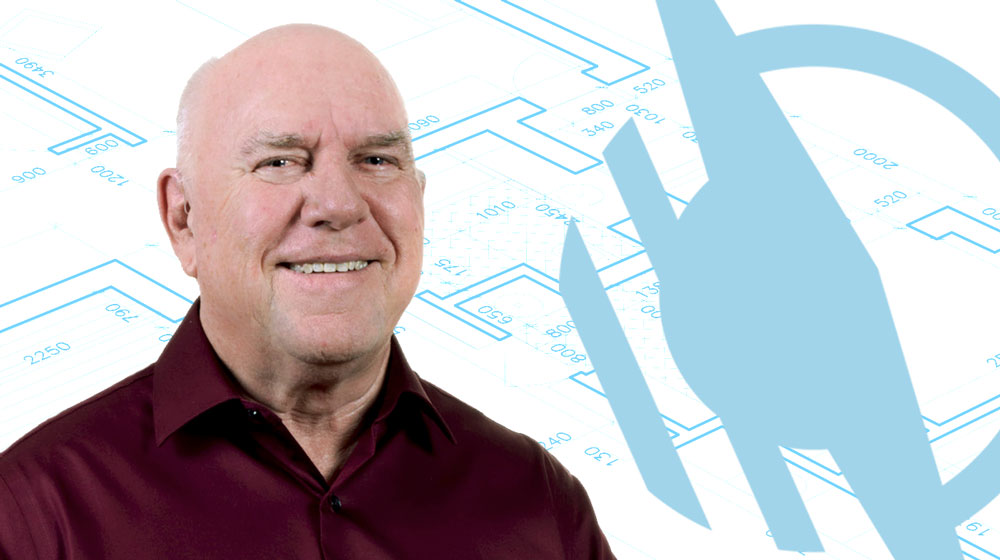Meet Armand, a Retired Architect with Vision Loss, Turned Entrepreneur

Imagine you are driving home from work one day and you notice the vision in one of your eyes is not quite right. You realize there are some places you can see in your left eye but not in your right. Even though the situation would be worrisome, you would probably go home, sleep it off, and wait to see if it’s better in the morning, right?
That’s exactly what happened to our co-founder, Armand Fisher. Except, his vision wasn’t better in the morning—it kept getting worse. When Armand went to the doctor, he found out that there was inflammation in his optic nerve, killing the nerve. The inflammation had lasted for too long, which caused him to lose most of the vision in his right eye. And even though the doctor said there was only a three percent chance the same thing would happen in his other eye, six months later it did. When the vision in his left eye began to change, Armand knew what was happening and acted quickly, but he still lost 75 percent of his vision.
When a welder looks through his mask, he sees bright, blue-tinted light on everything. He probably doesn’t want to walk around with the mask on. This is how Armand describes his vision. He can see contrast but can’t make out colors. Similarly, he can see a person’s torso but not the hands or face.
But Armand’s life is far more than his story of vision loss. Here are three things to know about the rest of Armand’s story:
1. He was a registered architect for 32 years.
Armand practiced architecture throughout the state of Texas working on schools, restaurants, administrative buildings, and municipal buildings. In fact, he and the other WayAround co-founder, Darwin, worked together in Odessa, Texas at the beginning of their architectural careers. Armand specialized in commercial architecture, and one of the jobs he says was most interesting was an administrative building for the Alabama-Coushatta Tribe of Texas. He liked that he was able to meet many members of the tribe and learn about their culture.
For the last stretch of his career, Armand worked on county jails. When Armand lost his eyesight in 2005, he was actively working with several counties. He couldn’t see to finish the projects, so Armand offered to find the counties a sighted architect. The counties declined his offer. Armand remembers the employers saying that he wasn’t hired because he could see but because of what he could do. Armand worked for several more years until he decided to retire in 2011.
2. His life didn’t stop when he became blind.
Armand will be the first to say that accepting his vision loss was not easy. He recalls that he went through a period of grieving and depression because life was never going to be the same. He found that accepting his blindness was all in his attitude. He first had to believe he was better blind before he could accept it and move forward.
His acceptance process actually led Armand to discover a deeper faith in God. Armand believes that God prepared him to lose his eyesight and eventually brought Armand to accept his vision for what it was. He worked his way through his diagnosis to then help others affected by abrupt vision loss.
Armand believes that his journey with vision loss has ultimately positively impacted his life. He has learned to love his wife of 41 years more than ever before. He is proud of her patience and determination to stick with him as he learned to do tasks on his own. In fact, becoming blind has made Armand more patient himself and has taught him how to persevere in tough situations rather than throw his hands in the air.
3. His past architecture experience and personal vision loss impacted his approach when designing WayAround.
Armand’s personal vision loss fueled his vision for WayAround. One day, Darwin and Armand were just catching up over lunch and the two began discussing what Armand felt was the hardest thing about being blind: finding and navigating through a public restroom
Because he lost his vision later in life, Armand didn’t have the opportunity to go to a school for the blind, other than his brief orientation and mobility training. Darwin and Armand discussing how they could get key information to a blind person in a way that’s intuitive.
Armand and Darwin came up with the idea of a tactile system being a necessary part of the solution. Because Armand knows what it’s like to become blind later in life, he wanted a system that works for someone who has just become blind and is learning to rely on the sense of touch. His goal is for people who are visually impaired to feel that they can get the information they need. His architectural background allowed him to create a simple and intuitive product that consistently works in various types of buildings.
We’ll leave you with Armand’s own words about why he started WayAround:
“My goal has always been to help people with loss of vision. I want WayAround to be a reminder that when people lose their vision, there is a resource or place for them to go. Our product will give people who are blind immediate help, hope, and assurance.”
Subscribe today for more WayAround tips and tricks!
Want to get tips, tricks, and news from WayAround delivered directly to your inbox? Subscribe today to get the latest! We will never spam you, and you can unsubscribe at any time.



